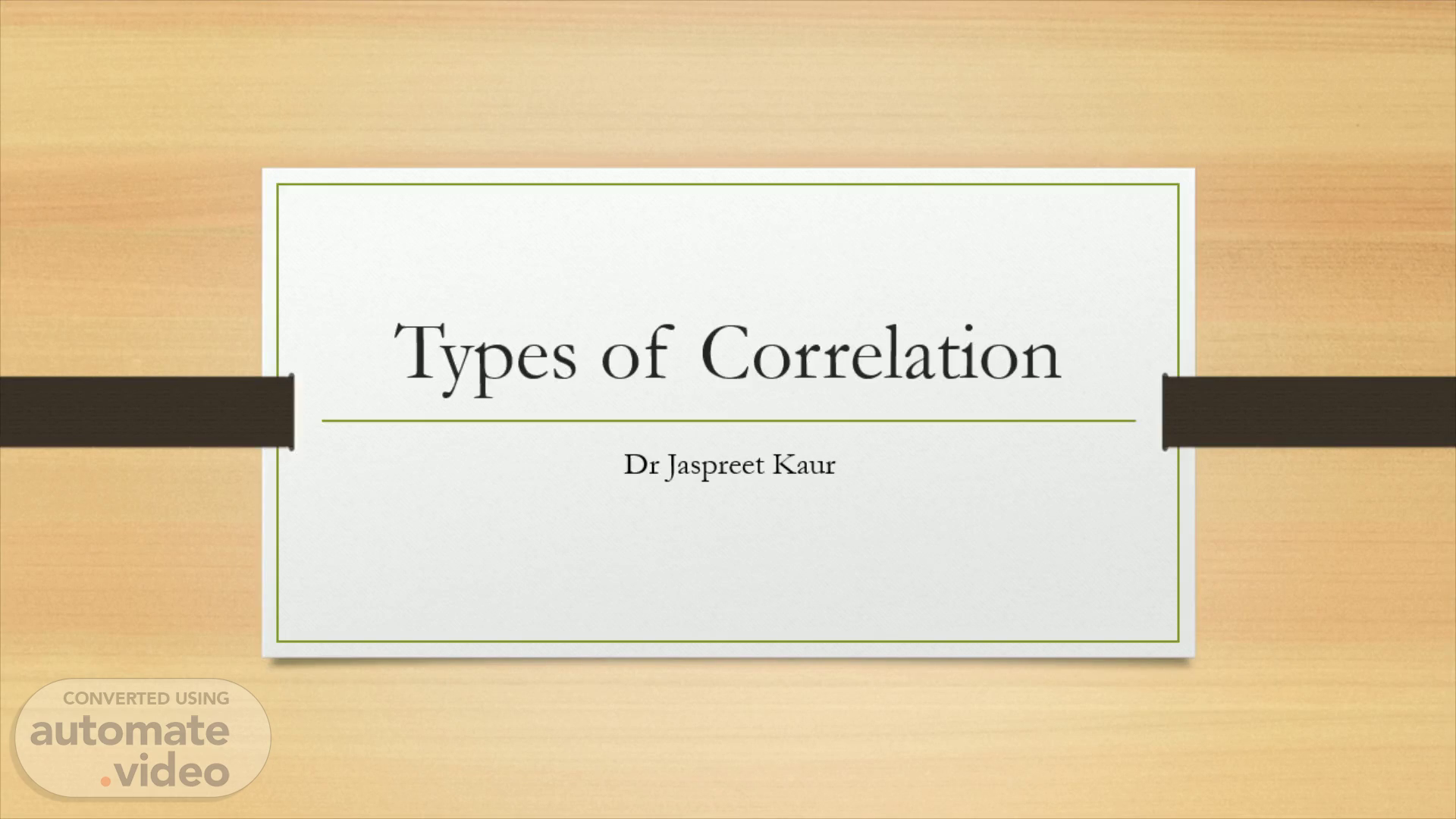
Types of Correlation
Scene 1 (0s)
Types of Correlation. Dr Jaspreet Kaur.
Scene 2 (6s)
Positive Correlation. If the value of the two variables deviate in the same direction, i.e., an increase in the value one variable results, on an average, in a corresponding increase in the values of the other variables or if a decrease in the value of one variable say X results on an average a corresponding decrease in the other variable say Y, the correlation is said to be positive or direct. The height and weight of a growing child is an example of positive correlation..
Scene 3 (30s)
Negative or inverse Correlation. The correlation is said to be negative or inverse if the two variables X and Y deviate in the opposite direction, i.e., if the increase (or decrease) in the values of the variable X results, on the average, in a corresponding decrease (or increase) in the values of other variable Y..
Scene 4 (47s)
The price and demand of a commodity or the consumption of electricity and its bill etc. are examples of negative or inverse correlation..
Scene 5 (58s)
Linear Correlation. If the plotted points (xi, yi ) are approximately on or near about a straight line, then the correlation between the variables is said to be linear. For example, the correlation between the savings and earnings of a man is a linear correlation..
Scene 6 (1m 12s)
Perfectly Linear Correlation. When all the plotted points lie exactly on a straight line, then the correlation is said to be perfectly linear..
Scene 7 (1m 23s)
Perfect Correlation. If the deviation in one variable is followed by a corresponding and proportional deviation in the other, then the correlation is said to perfect correlation..
Scene 8 (1m 34s)
Direct or Perfect Positive Correlation. If the correlation is perfectly linear and the line runs from the lower left hand corner to the upper right hand corner, then it is called the direct or positive perfect correlation. In other words, if the equal proportional change in the two variates x and y are in same direction, then it is a perfect positive correlation. In this case r = 1 or ρ (x, y) = 1..
Scene 9 (1m 54s)
Thank you.